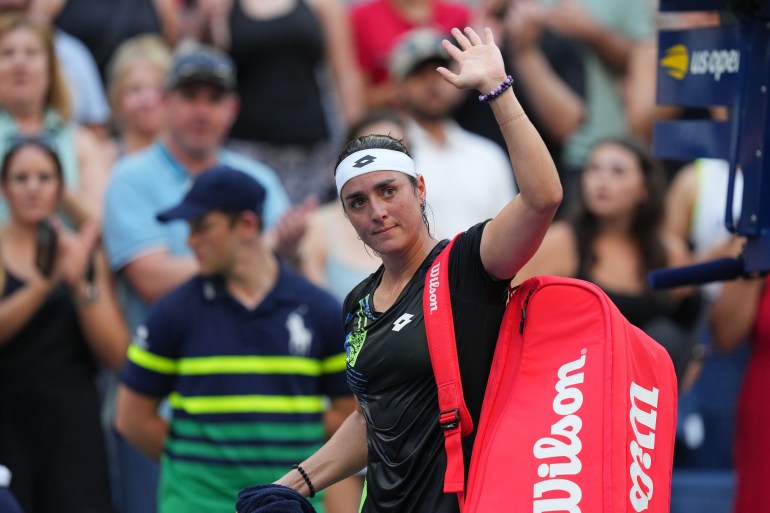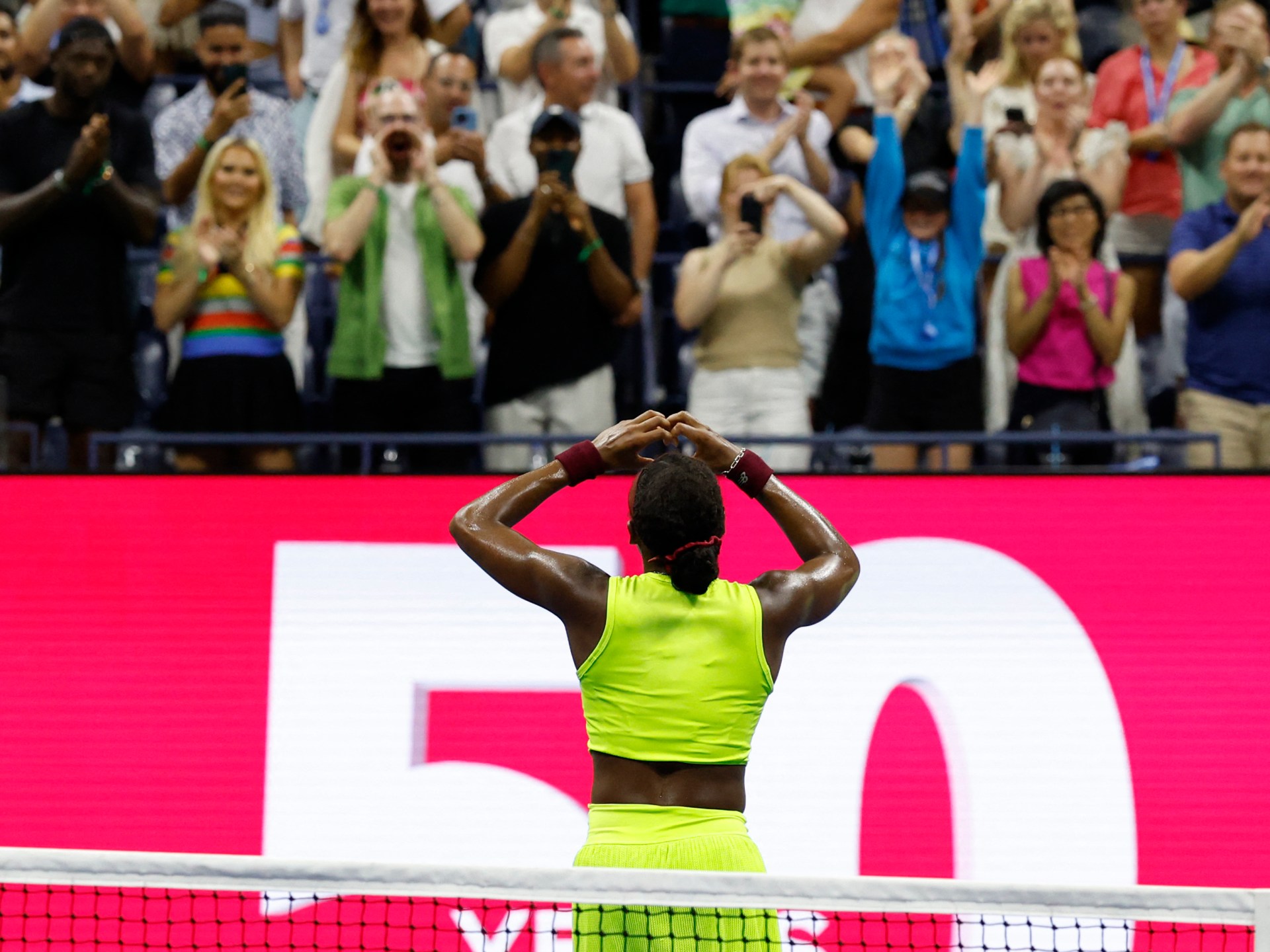New York, United States – When Taylor Townsend played her second match at this year’s US Open tennis tournament, she might have thought she was in Rio de Janeiro rather than New York.
Though Townsend is American and had plenty of crowd support, the noise for her opponent, Brazil’s Beatriz Haddad Maia, was arguably louder.
Townsend still won the match but wasn’t upset to face a crowd cheering for her opponent on home soil.
“I literally came off the court, I was like, that was so fire. It was so fun. The energy. I’ve never been to a professional soccer match … I felt like that was the vibe. It was like they were chanting … then people for me would start chanting, going back and forth,” said the world number 132.
“It was really cool … this is probably one of the most fun matches I’ve played in terms of crowd support. I really was feeding off of the energy.”
To anyone who regularly attends the US Open – that energy is no surprise.
Every year for two weeks, New York’s Billie Jean King National Tennis Center turns into a microcosm of its multicultural host city. Queens, the borough of New York City that houses the tournament, is particularly diverse – with large Asian, Middle Eastern and Latin American populations. According to census data, 47 percent of Queens’ population was born in a foreign country.
Those demographics are reflected in the crowd throughout the two weeks – at the Townsend-Haddad Maia match for instance, through a sea of Brazilian football shirts and chants in the stands of Court 17 last week.
“It’s very cool to see Brazilians in the crowd … Brazil has a lot of tradition in sport – supporting our players like in football. And tennis is becoming more popular in Brazil,” said Vinicius Palermo Thome, while watching Brazilian doubles player, Luisa Stefani this week.
“There’s a lot of people in Brazilian shirts, but there’s also a lot of people who aren’t wearing them but are Brazilian. I hear a lot of Portuguese [in the crowd].”
It’s a similar feeling for Joao Pedro, another Brazilian fan who travelled to New York with his family, as they have done to other tournaments across the US.
“Where we can we go and support and cheer … It’s very cool. We go watch the whole tournament and all the players, but when we see a Brazilian player it’s amazing.”
The multicultural festival that the US Open has become runs counter to the image many have of tennis – a white country club inaccessible to people of colour. And it’s a contrast that’s particularly evident when comparing the crowds at the US Open and Wimbledon – the London-based Grand Slam that precedes it on the tennis calendar.
“It is a noticeably un-diverse crowd at Wimbledon … compare it to the New York crowd. Compare it to the US Open crowd,” said tennis broadcaster Catherine Whitaker on a recent episode of The Tennis Podcast.
“Tennis is a very historically class-infected sport … and [the UK is] a society so riddled by the constraints of our class system,” said Whitaker.
“I feel like there are whole swaths of society in the UK that just deep down don’t feel like tennis is for them. And that is such a shame.”
For Indian player Rohan Bopanna – known by many as “Bops” – there’s no doubt that Indian fans in New York propelled him and partner Matt Ebden of Australia to this year’s Men’s Doubles Final.
“It’s those small [things]. Somebody in the crowd cheering you, ‘come on Matt’ or ‘come on Bops’. It makes a difference at the end of the day. So I think we definitely thank all the support we get. It’s fabulous.”
Ebden agrees: “We had strong support, especially the Indian crowd out there. So we wanted to use that.”
Like Haddad Maia against Townsend, Ebden was particularly aware of the support he and Bopanna got against an American pair in the quarterfinals.
“I remember when we came out for the match. And we’re in the US Open playing two Americans in the quarterfinals. And they came out. And then we came out and the crowd was much louder when we came out. So I was like, ‘Oh wow, this is great’.”

The increased attention, of course, does come with added pressure. Despite being the favourite in her match against Townsend – both in terms of crowd support and ranking – Haddad Maia did lose.
And Ons Jabeur, the pioneering Arab and Muslim player from Tunisia who has reached three Grand Slam finals in the past two seasons, went out early here as well.
But after her loss, Jabeur – who had plenty of support in New York – was quick to point out that on balance, the benefits of the support outweigh the pressure it brings.
“I think I’m trying to get used to it … Definitely I want to make the Arab world, the African world, proud of me. I’m learning how to handle the expectations from them,” said the world number six.
“But, yeah, I honestly don’t see any negative things in there, only positive. I cannot tell you guys the amount of messages that I receive either on social media or outside.
“When I go to any country, there is always Arab women or men that is supporting me. That means a lot to me and always pushes me to do better.”
